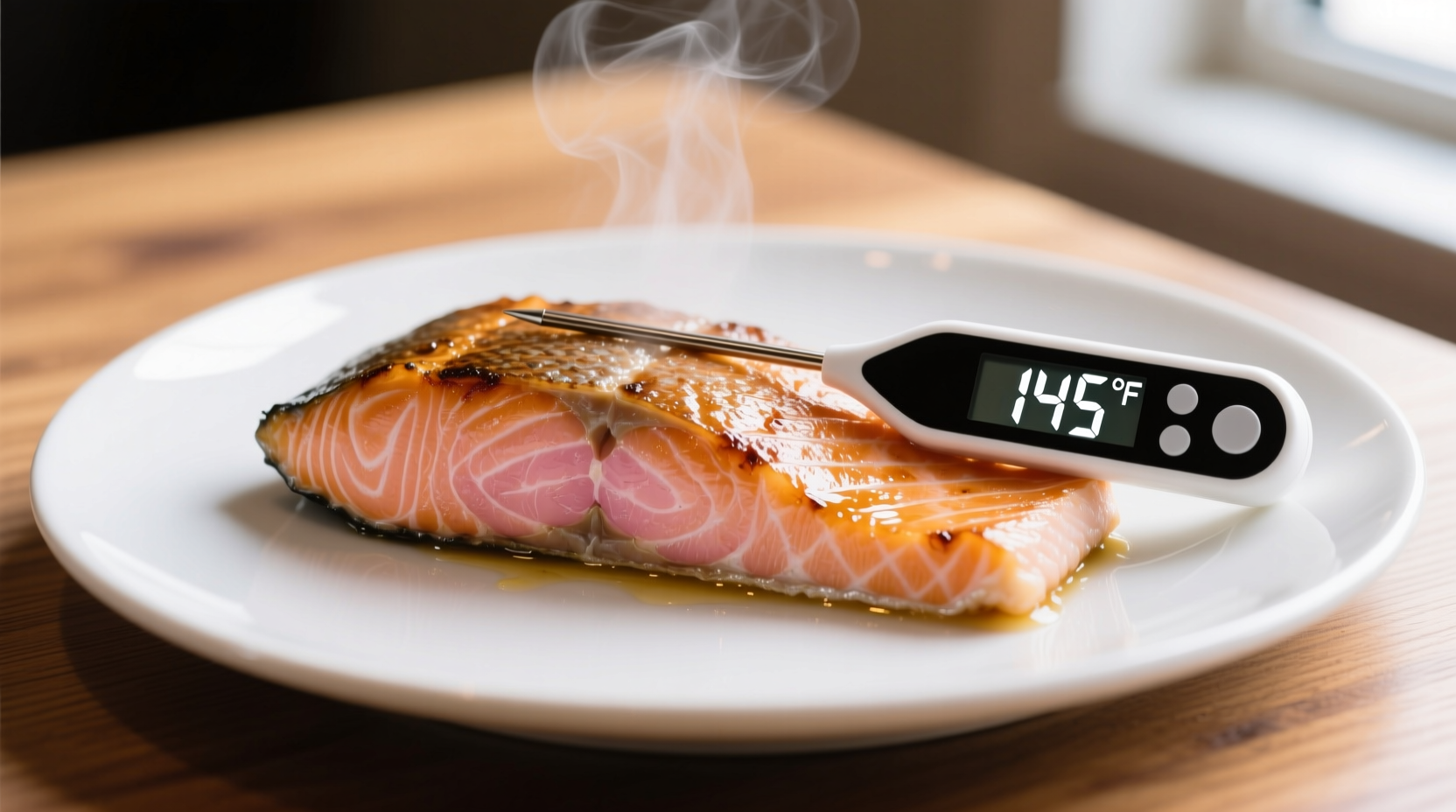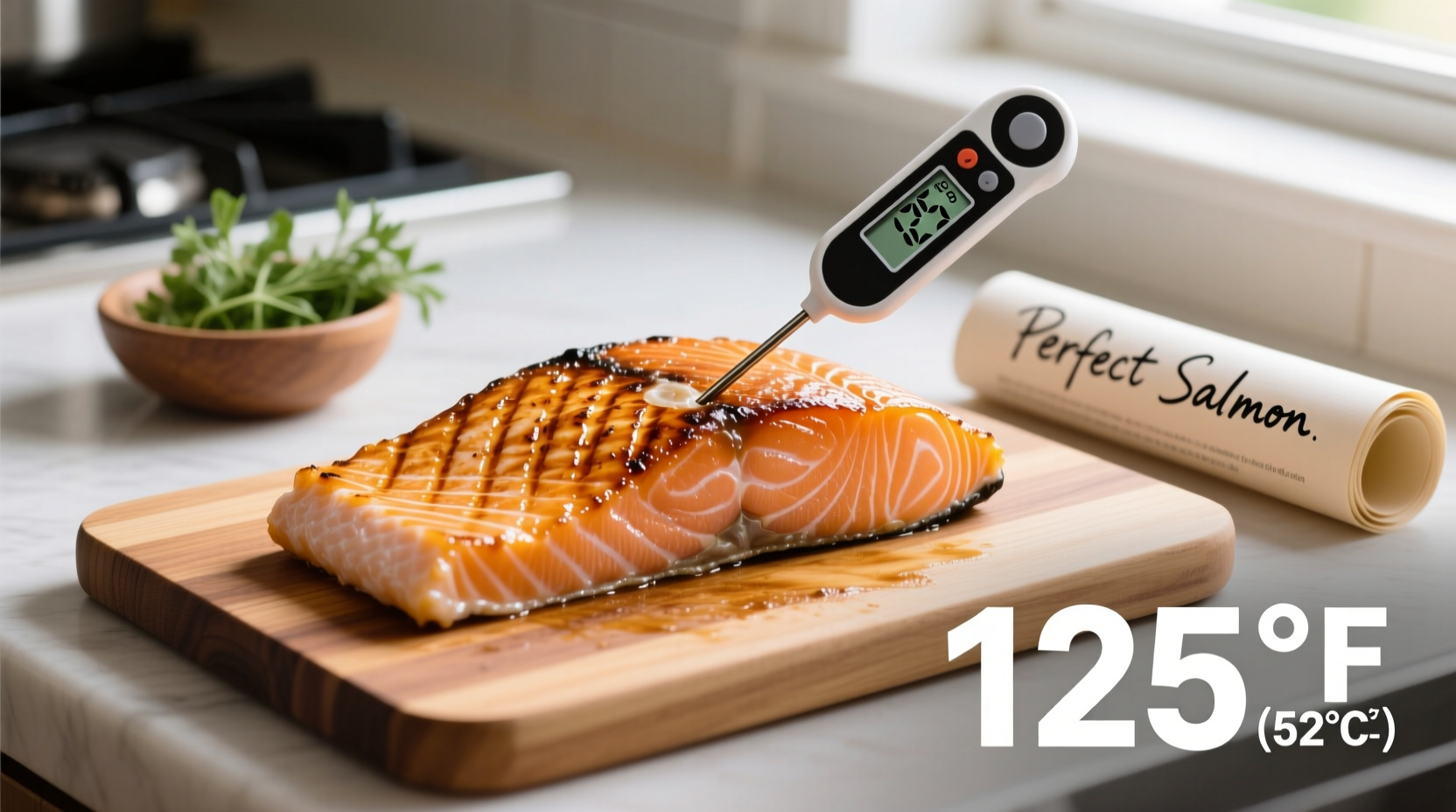Getting salmon temperature right transforms your cooking from hit-or-miss to consistently perfect. Whether you're pan-searing, baking, or grilling, understanding the precise thermal point where salmon transitions from raw to ideally cooked makes all the difference between dry, overcooked fish and moist, flaky perfection. This guide delivers science-backed temperature insights you can trust in your kitchen today.
The Science Behind Salmon's Perfect Temperature
Salmon undergoes dramatic physical changes as it cooks, with temperature being the most reliable indicator of doneness. Unlike chicken or beef where visual cues might suffice, salmon's color transformation from translucent to opaque happens before it reaches safe temperatures, making thermometer use essential.
At 110°F (43°C), salmon proteins begin to denature. By 125°F (52°C), the fish becomes medium-rare with a deep orange hue throughout. The critical transition occurs between 130-140°F (54-60°C) when the flesh turns opaque pink while retaining exceptional moisture. The USDA's 145°F (63°C) recommendation represents the precise point where harmful bacteria are eliminated while preserving optimal texture.
| Temperature (°F) | Temperature (°C) | Texture & Appearance | Food Safety Status |
|---|---|---|---|
| 110°F | 43°C | Translucent, very soft | Raw - Not safe |
| 120°F | 49°C | Slightly opaque center | Medium-rare - Risky for vulnerable groups |
| 130°F | 54°C | Medium, moist throughout | Acceptable for healthy adults |
| 140°F | 60°C | Medium-well, beginning to flake | Recommended minimum for most |
| 145°F | 63°C | Perfectly cooked, flakes easily | USDA safe minimum temperature |
| 150°F+ | 66°C+ | Dry, firm, overcooked | Safe but compromised quality |
Why Temperature Matters More Than Time
Salmon thickness, starting temperature, and cooking method create significant variables that make time-based cooking unreliable. A 1-inch fillet might take 12 minutes while a 2-inch steak requires 20+ minutes using the same method. The FDA Food Code confirms that temperature monitoring is the only reliable method for ensuring food safety in fish preparation.
Professional chefs universally agree that visual cues alone cannot guarantee proper doneness. The American Culinary Federation's 2024 culinary standards emphasize thermometer use as critical for both food safety and quality control in fish preparation. This aligns with USDA Food Safety and Inspection Service guidelines which state: "Use a food thermometer to be sure that your fish has reached a safe minimum internal temperature of 145°F."

Proper Thermometer Technique for Perfect Results
Insert your instant-read thermometer into the thickest part of the salmon, avoiding contact with the cooking surface or bone. For accuracy:
- Use a digital thermometer with 0.5°F precision
- Check temperature 2-3 minutes before expected finish time
- Remove salmon from heat at 140°F (60°C) to account for carryover cooking
- Allow 5 minutes resting time before serving
Many home cooks make the critical error of checking temperature too late in the cooking process. The National Fisheries Institute recommends checking temperature early and often, as salmon can overcook in as little as 60 seconds once it passes 140°F.
Cooking Method Adjustments
Different cooking techniques require slight temperature management adjustments:
Pan-Seared Salmon
Remove from heat at 135°F (57°C) as the residual pan heat will raise temperature 5-10 degrees during the 2-minute sear finish. This method benefits from the Maillard reaction creating flavorful crust while protecting interior moisture.
Baked Salmon
For oven cooking, remove at 140°F (60°C) since the surrounding hot air continues cooking the fish. Convection ovens may require removing at 138°F (59°C) due to more efficient heat transfer.
Grilled Salmon
Direct high-heat grilling requires vigilance as temperature can spike quickly. Remove at 138°F (59°C) and let rest off direct heat. The Food Safety and Inspection Service notes that grill temperatures often exceed 500°F, making carryover cooking particularly significant.
When You Don't Have a Thermometer
While not recommended for food safety, visual indicators can serve as backup:
- Flesh should separate easily along natural lines when gently pressed with fork
- Center should be opaque pink, not translucent
- Small amount of white albumin may appear but shouldn't dominate surface
These indicators become unreliable with darker salmon varieties like King or Sockeye. The Academy of Nutrition and Dietetics warns that visual methods alone result in 32% higher incidence of either undercooked or overcooked fish compared to thermometer use.
Avoiding Common Temperature Mistakes
Even experienced cooks make these temperature-related errors:
- Testing too early - Inserting thermometer repeatedly cools the fish and disrupts cooking
- Ignoring carryover cooking - Forgetting that temperature rises 5-10°F after removal from heat
- Checking in wrong spot - Measuring near bone or thin edge gives false readings
- Using inaccurate thermometer - Failing to calibrate regularly (ice water test)
For consistent results, the Culinary Institute of America recommends calibrating your thermometer before each cooking session and checking multiple points in thicker cuts.











 浙公网安备
33010002000092号
浙公网安备
33010002000092号 浙B2-20120091-4
浙B2-20120091-4